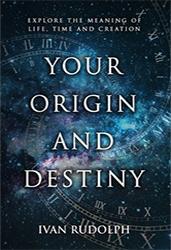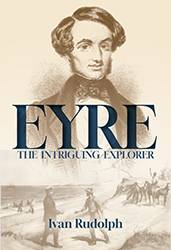Places Today En Route to Albany
Today Streaky Bay is a small, picturesque town of around a thousand people. The town itself serves the local wheat farming community and a significant fishing industry has developed, specialising in Crayfish (Lobsters), Abalone and shark. During school holidays it is a popular holiday destination for South Australian families.
Eyre left Smoky Bay on the 10th November 1840. Smoky Bay had been named by Flinders, not by Eyre as many erroneously suppose. Flinders wrote in 1802: “The number of smokes [from Aboriginal fires] rising from the shores of this wide, open place induced me to give it the name of Smokey (sic) Bay.” Smoky Bay is now a thriving community of 200 people, rising to a 1000 in school holidays.
Today Fowlers Bay is still remote. There is no town there but it sports a monument to Flinders and a caravan park. When Eyre left, he wrote that they said a final “adieu” to Scott. This wording has led various authors to claim that Cape Adieu at the western end of Fowlers Bay was named as a consequence of this farewell, but this is not so. Cape Adieu was in fact named by the French following Nicolas Boudin’s investigations along the southern coastline in 1802. It was actually the finishing point of the French Expedition before they returned.
Today the section of sea cliffs that occurs in South Australia is named the Bunda Cliffs, where the flat Nullarbor Plain overhangs the pounding Southern Ocean. Other names are given to the continuation of the cliffs in Western Australia, such as Baxter Cliffs (named for Eyre’s overseer), Wylie Scarp (named for Eyre’s Aboriginal companion), Wilsons Bluff and Hampton Range. At 790 km (205 km of it in South Australia) they are the longest line of sea cliffs on earth. They are not always suspended above the ocean; at times they sweep inland and low scrubby country lies between them and the sand and surf. Visually from the sea, the cliffs comprise many horizontal layers of different colours – white chalk, grey limestone, red soil and ironstone. It is supposed the sediments formed in horizontal layers millions of years ago beneath an ancient ocean. When the seabed was lifted above the waves, it retained its flat nature without hills or even high ground.
The Delisser Sand-hills lie just a few miles into Western Australia and south-east of today’s small settlement at Eucla. The region remained isolated for many years. For example, when John Forrest travelled along the coastline in 1870, he camped at one of Eyre’s original campsites and found neither whites nor blacks had visited it in the intervening 29 years. It had lain undisturbed all that time.
In Eyre’s time, the Delisser Sand-hills were considerably smaller than today. In the 1890’s a rabbit plague passed through the area, denuding the dunes of vegetation. This resulted in massive sand drifts that repeatedly cover and uncover the abandoned Eucla telegraph station, even to this day, making for dramatic photography.
Eyre Sand Patch is located 48km southeast of the present township of Cocklebiddy. The Eyre highway runs across the Hampton Tableland some 30 km to its north. The area is significant for the Eyre Bird Observatory and is the site of a remote meteorological station. The distance between it and Eucla, as Eyre estimated accurately by dead reckoning, is 256 km.
Rossiter Bay, named by Eyre, lies east of the nearby and bigger Lucky Bay. Today, both Rossiter Bay and Lucky Bay lie within the Cape Le Grand National Park. It is interesting that Captain Rossiter had sailed the first whaler into Port Lincoln harbour in 1839 after the initial settlers had arrived. Two features close to Port Lincoln were named by Captain Henry Hawson to honour that event – a fine stream, the Mississippi, ran through the impressive Rossiter Vale. By 1925, both names had fallen into disuse.
The King River (named after Captain Phillip King RN) and the Kalgan River (Aboriginal derivation, perhaps for “many waters”) both drain into Oyster Harbour, and thereby connect with King George Sound.



